 W
WAutomation is the technology by which a process or procedure is performed with minimal human assistance. Automation, or automatic control, is the use of various control systems for operating equipment such as machinery, processes in factories, boilers, and heat-treating ovens, switching on telephone networks, steering, and stabilization of ships, aircraft, and other applications and vehicles with minimal or reduced human intervention.
 W
WTechnological unemployment is the loss of jobs caused by technological change. It is a key type of structural unemployment.
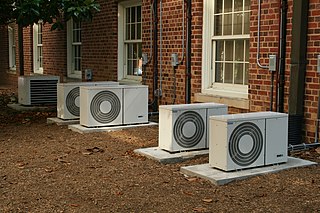 W
WAir conditioning is the process of removing heat and moisture from the interior of an occupied space to improve the comfort of occupants. Air conditioning can be used in both domestic and commercial environments. This process is most commonly used to achieve a more comfortable interior environment, typically for humans and other animals; however, air conditioning is also used to cool and dehumidify rooms filled with heat-producing electronic devices, such as computer servers, power amplifiers, and to display and store some delicate products, such as artwork.
 W
WA computer appliance is a computer with software or firmware that is specifically designed to provide a specific computing resource. Such devices became known as appliances because of the similarity in role or management to a home appliance, which are generally closed and sealed, and are not serviceable by the user or owner. The hardware and software are delivered as an integrated product and may even be pre-configured before delivery to a customer, to provide a turn-key solution for a particular application. Unlike general purpose computers, appliances are generally not designed to allow the customers to change the software and the underlying operating system, or to flexibly reconfigure the hardware.
 W
WAn automat is a fast food restaurant where simple foods and drinks are served by vending machines. The world's first automat was named Quisisana, which opened in Berlin, Germany in 1895.
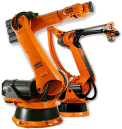 W
WIn telephony, an automated attendant allows callers to be automatically transferred to an extension without the intervention of an operator/receptionist. Many AAs will also offer a simple menu system. An auto attendant may also allow a caller to reach a live operator by dialing a number, usually "0". Typically the auto attendant is included in a business's phone system such as a PBX, but some services allow businesses to use an AA without such a system. Modern AA services can route calls to mobile phones, VoIP virtual phones, other AAs/IVRs, or other locations using traditional land-line phones or voice message machines.
 W
WAn automated convenience store is a convenience store that operates without a cashier, and instead relies on computers and robotics.
 W
WAn automated (car) parking system (APS) is a mechanical system designed to minimize the area and/or volume required for parking cars. Like a multi-story parking garage, an APS provides parking for cars on multiple levels stacked vertically to maximize the number of parking spaces while minimizing land usage. The APS, however, utilizes a mechanical system to transport cars to and from parking spaces in order to eliminate much of the space wasted in a multi-story parking garage. While a multi-story parking garage is similar to multiple parking lots stacked vertically, an APS is more similar to an automated storage and retrieval system for cars. The paternoster is an example of one of the earliest and most common types of APS.
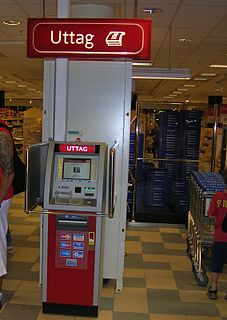 W
WAn automated teller machine (ATM) or cash machine is an electronic telecommunications device that enables customers of financial institutions to perform financial transactions, such as cash withdrawals, deposits, funds transfers, or account information inquiries, at any time and without the need for direct interaction with bank staff.
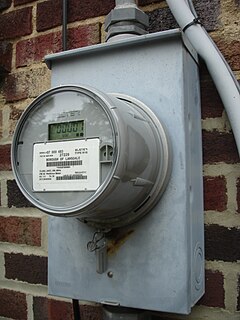 W
WAutomatic meter reading (AMR) is the technology of automatically collecting consumption, diagnostic, and status data from water meter or energy metering devices and transferring that data to a central database for billing, troubleshooting, and analyzing. This technology mainly saves utility providers the expense of periodic trips to each physical location to read a meter. Another advantage is that billing can be based on near real-time consumption rather than on estimates based on past or predicted consumption. This timely information coupled with analysis can help both utility providers and customers better control the use and production of electric energy, gas usage, or water consumption.
 W
WAn automatic scorer is the computerized scoring system to keep track of scoring in ten-bowling. It was introduced into bowling alleys in the 1970s and combined with mechanical pinsetters for detecting the pins bowled down. Automatic scorers took away the task of having to keep score by hand by using a specialized computer designed for the task of automatically keeping the tally.
 W
WAutomation bias is the propensity for humans to favor suggestions from automated decision-making systems and to ignore contradictory information made without automation, even if it is correct. Automation bias stems from the social psychology literature that found a bias in human-human interaction that showed that people assign more positive evaluations to decisions made by humans than to a neutral object. The same type of positivity bias has been found for human-automation interaction, where the automated decisions are rated more positively than neutral. This has become a growing problem for decision making as intensive care units, nuclear power plants, and aircraft cockpits have increasingly integrated computerized system monitors and decision aids to mostly factor out possible human error. Errors of automation bias tend to occur when decision-making is dependent on computers or other automated aids and the human is in an observatory role but able to make decisions. Examples of automation bias range from urgent matters like flying a plane on automatic pilot to such mundane matters as the use of spell-checking programs.
 W
WAn automaton is a relatively self-operating machine, or a machine or control mechanism designed to automatically follow a predetermined sequence of operations, or respond to predetermined instructions. Some automata, such as bellstrikers in mechanical clocks, are designed to give the illusion to the casual observer that they are operating under their own power. Since long ago, the term is commonly associated with automated puppets that resemble moving humans or animals, built to impress and/or to entertain people.
 W
WA control system manages, commands, directs, or regulates the behavior of other devices or systems using control loops. It can range from a single home heating controller using a thermostat controlling a domestic boiler to large Industrial control systems which are used for controlling processes or machines.
 W
WDC injection braking is a method of slowing AC electric motors. A DC voltage is injected into the winding of the AC motor after the AC voltage is disconnected, providing braking force to the rotor.
 W
WDematic is an American supplier of materials handling systems, software and services. With a growth rate of 25% in 2016 Dematic was listed as the world's third-largest materials handling systems supplier. The company employs over 6,000 people and has engineering centres and manufacturing facilities in the United States, Mexico, Australia, Germany, Italy, China and Czech Republic. Its customer base includes small, medium and large companies.
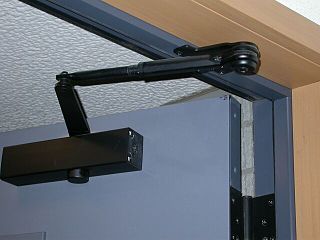 W
WA door closer is defined as any mechanical device that closes a door in a controlled manner, preventing it from slamming, in general after someone opens it, or after it was automatically opened. The force used to open the door is stored in some type of spring and when released this energy is then utilised to return the door to a closed position. Door closers can be linked to a building’s fire alarm system. Where doors need to be held open for the majority of the time they are held back with an electromagnetic device. When the fire alarm is triggered it cuts power to the electromagnetic hold-open device allowing the doors to close. These hold-open devices can be separate from the door closer or part of its design.
 W
WAn electric gate is an entrance gate which can be opened and closed via an electric powered mechanism.
 W
WAn electronic control unit (ECU), also known as an electronic control module (ECM), is an embedded system in automotive electronics that controls one or more of the electrical systems or subsystems in a vehicle.
 W
WA filling carousel is intended for filling large quantities of liquefied petroleum gas (LPG) cylinders. It consists of a frame with running wheels, rails, a central column for LPG and air, and a driving unit the carousel frame around the central column. The speed of the carousel can be adapted to the various filling times and capacities. The dimension of the carousel is important to consider for the future filling capacity. The carousel frame chosen can be equipped with a number of filling scales, selected for the present demand and possible future demands. Filling carousels can be provided with equipment for automatic introduction and automatic filling scales with ejection of cylinders.
 W
WFlexLink, also FlexLink AB, is a manufacturer of flexible, modular conveyors and industrial automation equipment. Headquartered in Göteborg, Sweden, FlexLink has manufacturing, production and engineering facilities in Allentown (USA), Plewiska (Poland) and Kuala Lumpur (Malaysia). There are operating units in 27 countries and a global network of Strategic Partners. Altogether FlexLink is present in over 60 countries. Since 2003, FlexLink has been ranked in the world's top 20 largest materials handling system suppliers.
 W
WA high performance positioning system (HPPS) is a type of positioning system consisting of a piece of electromechanics equipment that is capable of moving an object in a three-dimensional space within a work envelope. Positioning could be done point to point or along a desired path of motion. Position is typically defined in six degrees of freedom, including linear, in an x,y,z cartesian coordinate system, and angular orientation of yaw, pitch, roll. HPPS are used in many manufacturing processes to move an object smoothly and accurately in six degrees of freedom, along a desired path, at a desired orientation, with high acceleration, high deceleration, high velocity and low settling time. It is designed to quickly stop its motion and accurately place the moving object at its desired final position and orientation with minimal jittering.
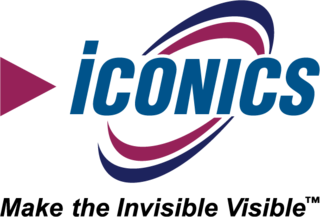 W
WICONICS is an industrial automation provider. ICONICS software is used by many industries such as Automotive, Transportation, Building Control, Security, Food, Pharmaceutical, Machine Building, Oil, Gas, Petrochemical, Water and Wastewater, Renewable Energy and Manufacturing.
 W
WAn industrial safety system is a countermeasure crucial in any hazardous plants such as oil and gas plants and nuclear plants. They are used to protect human, industrial plant, and the environment in case of the process going beyond the allowed control margins.
 W
WThe Interroll Worldwide Group is a manufacturer of products for unit-load handling systems, internal logistics and automation.
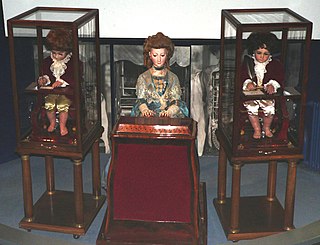 W
WThe Jaquet-Droz automata, among all the numerous automata built by the Jaquet-Droz family, refer to three doll automata built between 1768 and 1774 by Pierre Jaquet-Droz, his son Henri-Louis, and Jean-Frédéric Leschot: the musician, the draughtsman and the writer. The dolls are still functional, and can be seen at the Musée d'Art et d'Histoire of Neuchâtel, in Switzerland. They are considered to be among the remote ancestors of modern computers.
 W
WA linear motor is an electric motor that has had its stator and rotor "unrolled" thus instead of producing a torque (rotation) it produces a linear force along its length. However, linear motors are not necessarily straight. Characteristically, a linear motor's active section has ends, whereas more conventional motors are arranged as a continuous loop.
 W
WLogistics automation is the application of computer software or automated machinery to improve the efficiency of logistics operations. Typically this refers to operations within a warehouse or distribution center, with broader tasks undertaken by supply chain engineering systems and enterprise resource planning systems.
 W
WLPA512 was an industrial programmable logic controller—a small, portable computer developed by the Ivo Lola Ribar Institute of Serbia in 1986 as an enhancement to its prior product, PA512. It was first deployed in the Maribor car factory.
 W
WIn music recording, mix automation allows the console to remember the audio engineer's adjustment of faders during the post-production editing process. A timecode is necessary for the synchronization of automation. Modern mixing consoles and digital audio workstations use comprehensive mix automation.
 W
WMonsterMind is a U.S. National Security Agency (NSA) program which creates an automated response to a foreign cyber-attack.
 W
WMotion control is a sub-field of automation, encompassing the systems or sub-systems involved in moving parts of machines in a controlled manner. A motion control system is extensively used in a variety of fields for automation purposes, including precision engineering, micromanufacturing, biotechnology, and nanotechnology. The main components involved typically include a motion controller, an energy amplifier, and one or more prime movers or actuators. Motion control may be open loop or closed loop. In open loop systems, the controller sends a command through the amplifier to the prime mover or actuator, and does not know if the desired motion was actually achieved. Typical systems include stepper motor or fan control. For tighter control with more precision, a measuring device may be added to the system. When the measurement is converted to a signal that is sent back to the controller, and the controller compensates for any error, it becomes a Closed loop System.
 W
WMotor drive, or simply known as drive, describes equipment used to control the speed of machinery. Many industrial processes such as assembly lines must operate at different speeds for different products. Where process conditions demand adjustment of flow from a pump or fan, varying the speed of the drive may save energy compared with other techniques for flow control.
 W
WA motor soft starter is a device used with AC electrical motors to temporarily reduce the load and torque in the powertrain and electric current surge of the motor during start-up. This reduces the mechanical stress on the motor and shaft, as well as the electrodynamic stresses on the attached power cables and electrical distribution network, extending the lifespan of the system.
 W
WIn manufacturing industry, Nesting refers to the process of laying out cutting patterns to minimize the raw material waste. Examples include manufacturing parts from flat raw material such as sheet metal.
 W
WOpto 22 is a manufacturing company specializing in hardware and software products for industrial automation, remote monitoring, and data acquisition. The company is based in Southern California and sells solid state relays and Ethernet-based input/output systems and controllers. It is based in Temecula, California.
 W
WThe following outline is provided as an overview of and topical guide to automation:
 W
WPackaging machinery is used throughout all packaging operations, involving primary packages to distribution packs. This includes many packaging processes: fabrication, cleaning, filling, sealing, combining, labeling, overwrapping, palletizing.
 W
WA photoelectric sensor, is an equipment used to discover the distance, absence, or presence of an object by using a light transmitter, often infrared, and a photoelectric receiver. They are largely used in industrial manufacturing. There are three different useful types: opposed (through-beam), retro-reflective, and proximity-sensing (diffused).
 W
WA pneumatic motor, or compressed air engine, is a type of motor which does mechanical work by expanding compressed air. Pneumatic motors generally convert the compressed air energy to mechanical work through either linear or rotary motion. Linear motion can come from either a diaphragm or piston actuator, while rotary motion is supplied by either a vane type air motor, piston air motor, air turbine or gear type motor.
 W
WRemote dispensing is used in health care environments to describe the use of automated systems to dispense prescription medications without an on-site pharmacist. This practice is most common in long-term care facilities and correctional institutions that do not find it practical to operate a full-service in-house pharmacy.
 W
WA self-driving car, also known as an autonomous vehicle (AV), driverless car, or robo-car is a vehicle that is capable of sensing its environment and moving safely with little or no human input.
 W
WSensor-based sorting, is an umbrella term for all applications where particles are singularly detected by a sensor technique and rejected by an amplified mechanical, hydraulic or pneumatic process. The technique is generally applied in the three industries mining, recycling and food processing and used in the particle size range between 0.5 and 300 mm. Since sensor-based sorting is a single particle separation technology, the throughput is proportional to the average particle size and weight fed onto the machine.
 W
WA sliding door operator is a device that operates a sliding door for pedestrian use. It opens the door automatically, waits, then closes it.
 W
WTelerik Test Studio is a Windows-based software testing tool for web and desktop functional testing, software performance testing, load testing and mobile application testing developed by Telerik. The tool ships with a plugin for Visual Studio and a standalone app that use the same repositories and file formats. Test Studio supports HTML, AJAX, Silverlight, ASP.NET MVC, JavaScript and WPF. Test Studio supports test execution in Internet Explorer, Firefox, Safari and Chrome.
 W
WThe Ebony Horse, The Enchanted Horse or The Magic Horse is a folk tale featured in the Arabian Nights. It features a flying mechanical horse, controlled using keys, that could fly into outer space and towards the Sun. The ebony horse can fly the distance of one year in a single day, and is used as a vehicle by the Prince of Persia, Qamar al-Aqmar, in his adventures across Persia, Arabia and Byzantium.
 W
WTillie the All-Time Teller was one of the first ATMs, run by the First National Bank of Atlanta and considered to be one of the most successful ATMs in the banking industry. Tillie the All-Time Teller had a picture of a smiling blonde girl on the front of the machine to suggest it was user-friendly, had an apparent personality, and could greet people by name. Many banks hired women dressed as this person to show their customers how to use Tillie the All-Time Teller.
 W
WA variable-frequency drive (VFD) or adjustable-frequency drive (AFD), variable-voltage/variable-frequency (VVVF) drive, variable speed drive (VSD), AC drive, micro drive or inverter drive is a type of motor drive used in electro-mechanical drive systems to control AC motor speed and torque by varying motor input frequency and voltage.
 W
WVehicular automation involves the use of mechatronics, artificial intelligence, and multi-agent system to assist a vehicle's operator. These features and the vehicles employing them may be labeled as intelligent or smart. A vehicle using automation for difficult tasks, especially navigation, may be referred to as semi-autonomous. A vehicle relying solely on automation is consequently referred to as robotic or autonomous. After the invention of the integrated circuit, the sophistication of automation technology increased. Manufacturers and researchers subsequently added a variety of automated functions to automobiles and other vehicles. The technology involved in implementing autonomous vehicles is very expansive, ranging from technological improvements on the vehicle itself to the environment and objects around the vehicle. As the use of automated vehicles increases, they are becoming more influential in human lives. Although automated vehicles bring various benefits, it also comes with various concerns. Also, there are still technology challenges that autonomous vehicles seek to make a breakthrough in order to make it robust and scalable.
 W
WThe War on Normal People: The Truth About America's Disappearing Jobs and Why Universal Basic Income Is Our Future is a 2018 book written by Andrew Yang, an American entrepreneur and Venture for America founder, who would later run as a 2020 Democratic presidential candidate on policy strategies discussed in the book. It was published by Hachette Books in the United States on April 3, 2018. A paperback edition was released on April 2, 2019. Yang narrated an audiobook version released on YouTube in September 2018.